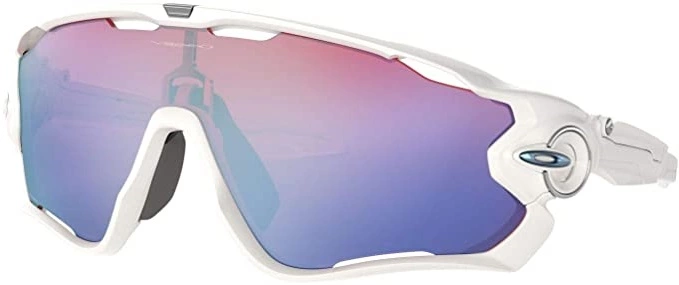When you’re bombing down a trail at 20mph, the last thing you want is debris flying into your eyes or glare from the sun obstructing your vision. That’s why good eyewear is an essential piece of mountain biking gear. The right cycling shades can help keep your eyes safe and let you see the trail ahead clearly.
What to Look For in Mountain Biking Glasses
Lens Type
One of the most important factors in choosing mountain biking eyewear is the lens type. There are a variety of lens options designed for different lighting conditions.
Clear lenses work well for low light situations like dense forest trails or pre-dawn rides. They provide optical clarity while allowing maximal light transmission.
Contrast-enhancing lenses are excellent for variable conditions. They heighten terrain details in shadows but also cut glare when you emerge from tree cover. This versatility makes them a great all-around option.
Mirrored lenses reduce glare and reflections. They are ideal for open trails on sunny days. The mirror coating filters bright light while the tint behind it balances contrast. Mirrored lenses come in a range of subtle to flashy tints to match your style.
Polarized lenses are specially constructed to eliminate blinding horizontal glare. This makes them perfect for trails that traverse open meadows or parallel water. The improved visibility and comfort polarized lenses offer can be a real advantage.
Photochromic lenses have reactive tints that automatically adjust based on ambient light levels. This enables them to adapt seamlessly from shade to sun exposure. While convenient, photochromic lenses can struggle with very rapid light changes.
Lens Shape and Coverage
The shape and size of your sunglasses’ lenses also affect quality and safety. Many mountain biking eyewear models offer extra coverage and optimized geometry.
Wraparound lens shapes better shield your eyes from flying debris, vegetation, and peripheral glare. The curved temple arms on wrap sunglasses also provide a more secure fit when riding aggressively.
Oversized lenses give you a broader field of protected and filtered vision. This expanded coverage is extremely valuable for safely spotting obstacles and traversing varied terrain at speed.
Nose guards and ventilation cutouts on the frames prevent fogging and overheating. Venting keeps air circulating to ensure your lenses stay clear.
Durability
Your mountain biking eyewear will be exposed to all sorts of abuse from crashes to drops to being crammed in a pack. Durability equals longevity.
Look for sturdy yet flexible Grilamid or polycarbonate frames that can handle impacts. Reinforced hinges also protect weaker points prone to breaking.
Hard resin lenses hold up better to scratches, dings, and cleaning than glass options. Premium brands also apply scratch-resistant and water-repellent lens coatings.
Finally, make sure retaining straps, helmet anchors, and other components are made of hardy materials as well. The last thing you want is your glasses falling off on a rough descent!
Getting the Right Fit
All the protective qualities and optical enhancements mean nothing if your eyewear doesn’t fit properly. Ill-fitting sunglasses are liable to bounce off on a hard landing. They also let in stray light that undermines their glare-fighting abilities.
When trying on mountain biking shades, check that:
- The frames and arms grip your head securely without pinching
- The lenses align with your eyes and offer full front/peripheral coverage
- Nose guards prevent the glasses from slipping down
Take models with interchangeable lens and temple sets for a test ride. This allows you to customize both fit and optics until you find the perfect combination.
If you wear prescription glasses, look for oversized mountain biking shades designed to fit over them comfortably. Some brands also offer models with inserts for prescription lenses.
Wearing Your Mountain Biking Eyewear
Getting shades with the proper technical features is wasted if you don’t use them correctly out on the trails. Follow this eyewear etiquette to stay safe and make the most of your vision.
Put Your Glasses on First
Before you even leave the trailhead parking lot, don your eyewear. It only takes one stray stick flung from another rider’s tire to do damage. Prevent ocular accidents right from the start.
Ride with Them All the Time
It’s tempting to push your sunglasses up onto your helmet when tackling dense woods or descending in shade. Don’t give in! Inconsistently wearing your shades makes you less adapted to light changes. That boosts risk of crashes. Keeping them on also protects against debris kicked up by your own tires. Commit to wearing your eyewear whenever actually riding.
Pair Them with Other Protection
Your cycling shades shield vulnerable eyes. But they leave the rest of your face vulnerable. A normal helmet only protects the top half of your head. Combine your glasses with a convertible full face helmet for more complete coverage. You can easily flip up the chin guard when climbing. Then deploy it again before bombing downhill or navigating technical singletrack. Take advantage of modular protection!
Clean Them Properly
Dirt, oils, sweat, and skin cells will gradually accumulate on your eyewear lenses and compromise optical clarity. Keep a microfiber cloth in your pack to wipe them down periodically. Clean stuck-on grime with lens cleaner and gentle rinsing. Let your glasses air dry rather than wiping to prevent scratching. Proper maintenance keeps them performing like new.
Replace Them When Needed
No matter how careful you are, constant abuse will eventually degrade your mountain biking sunglasses. Scratched lenses, bent frames, broken parts and general wear will happen despite your best efforts. Don’t wait until failure happens at speed. Inspect eyewear regularly and replace once protection and optics are significantly compromised. It’s cheaper than an ER visit!
Caring for your eyes with quality, properly fitted mountain biking sunglasses is just basic trail wisdom. Protect your vision and ride more comfortably on every outing. Leverage modern sports optics to spot hazards early and navigate vibrant terrain more smoothly. Get the right shades for the trails you ride and use them diligently. Your eyes will thank you!
